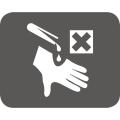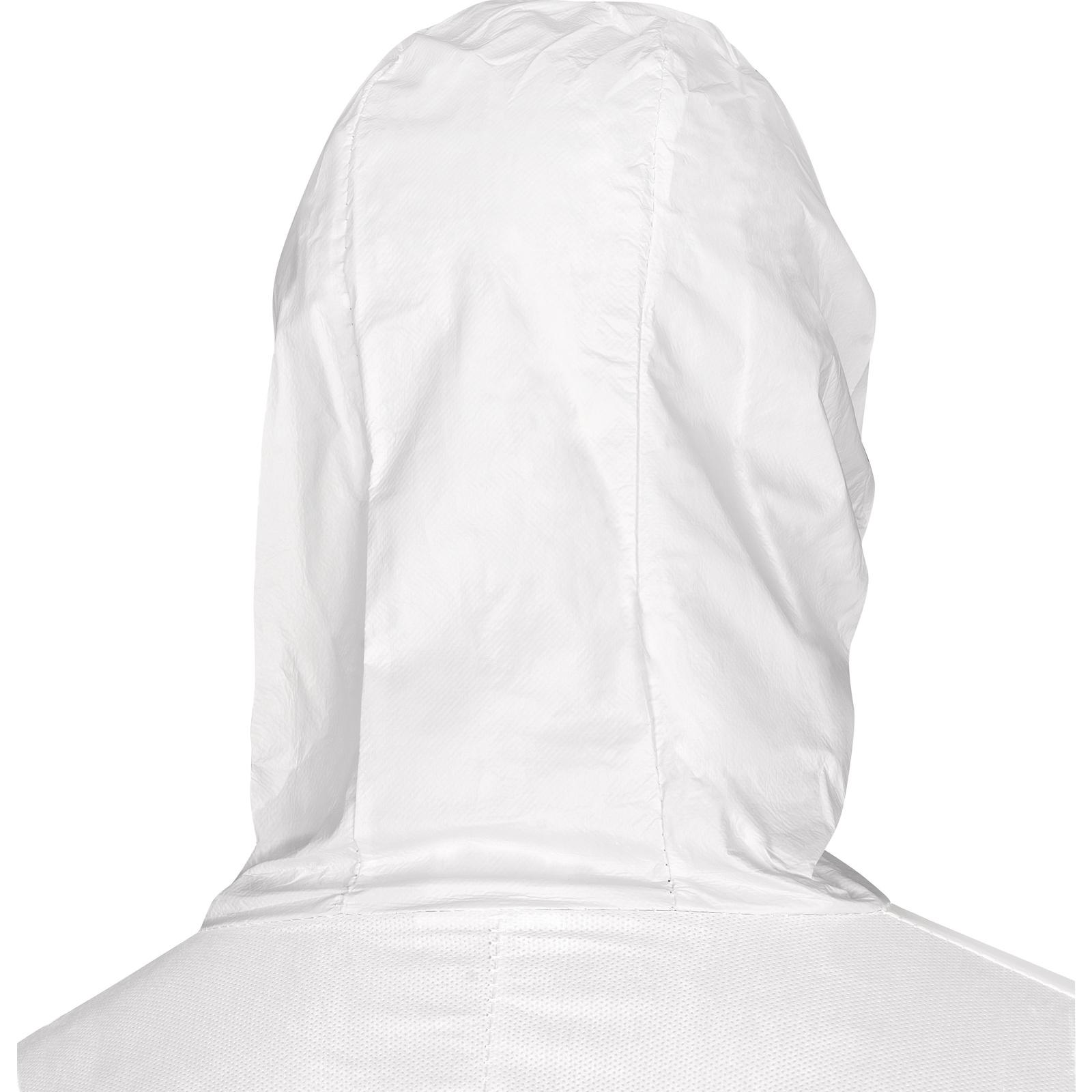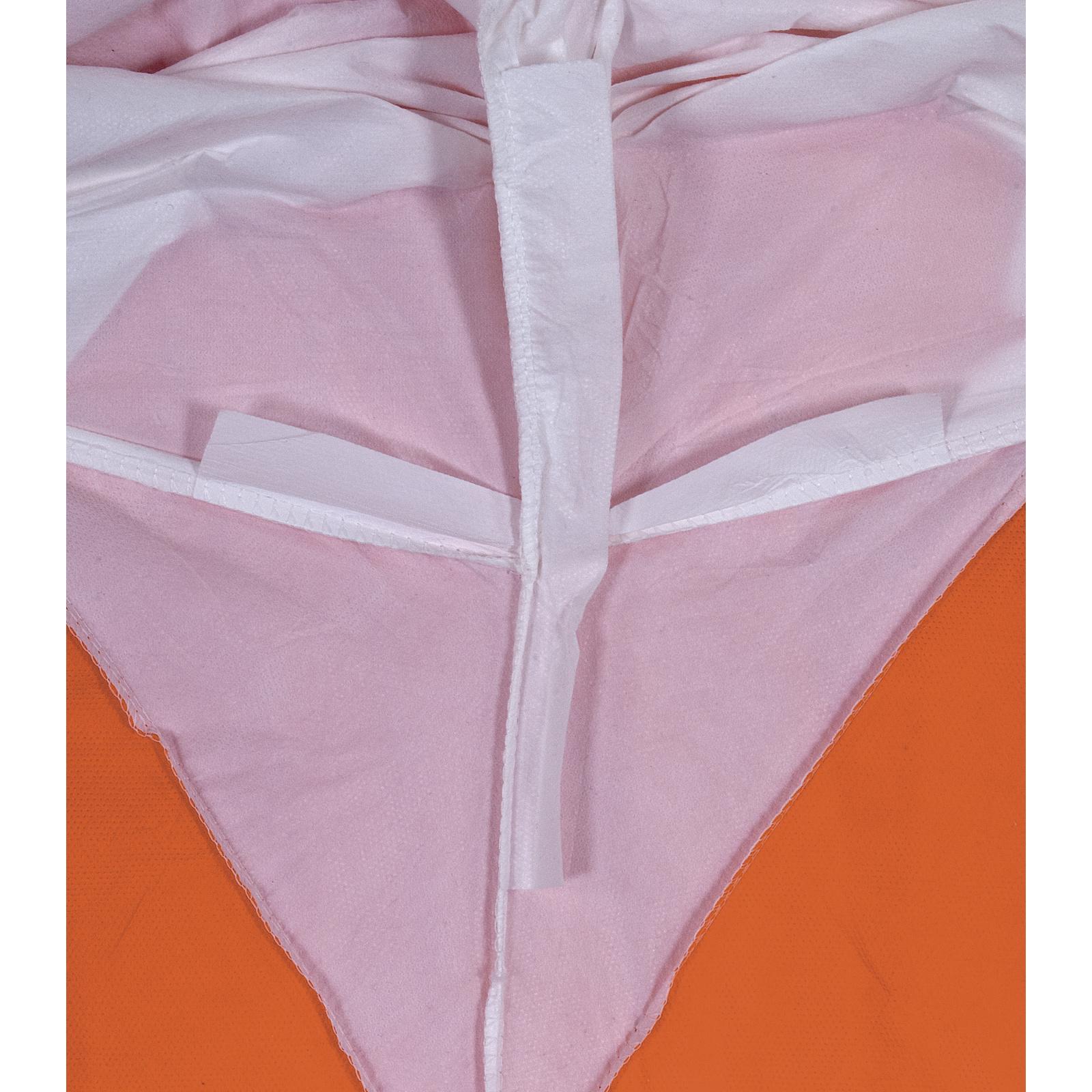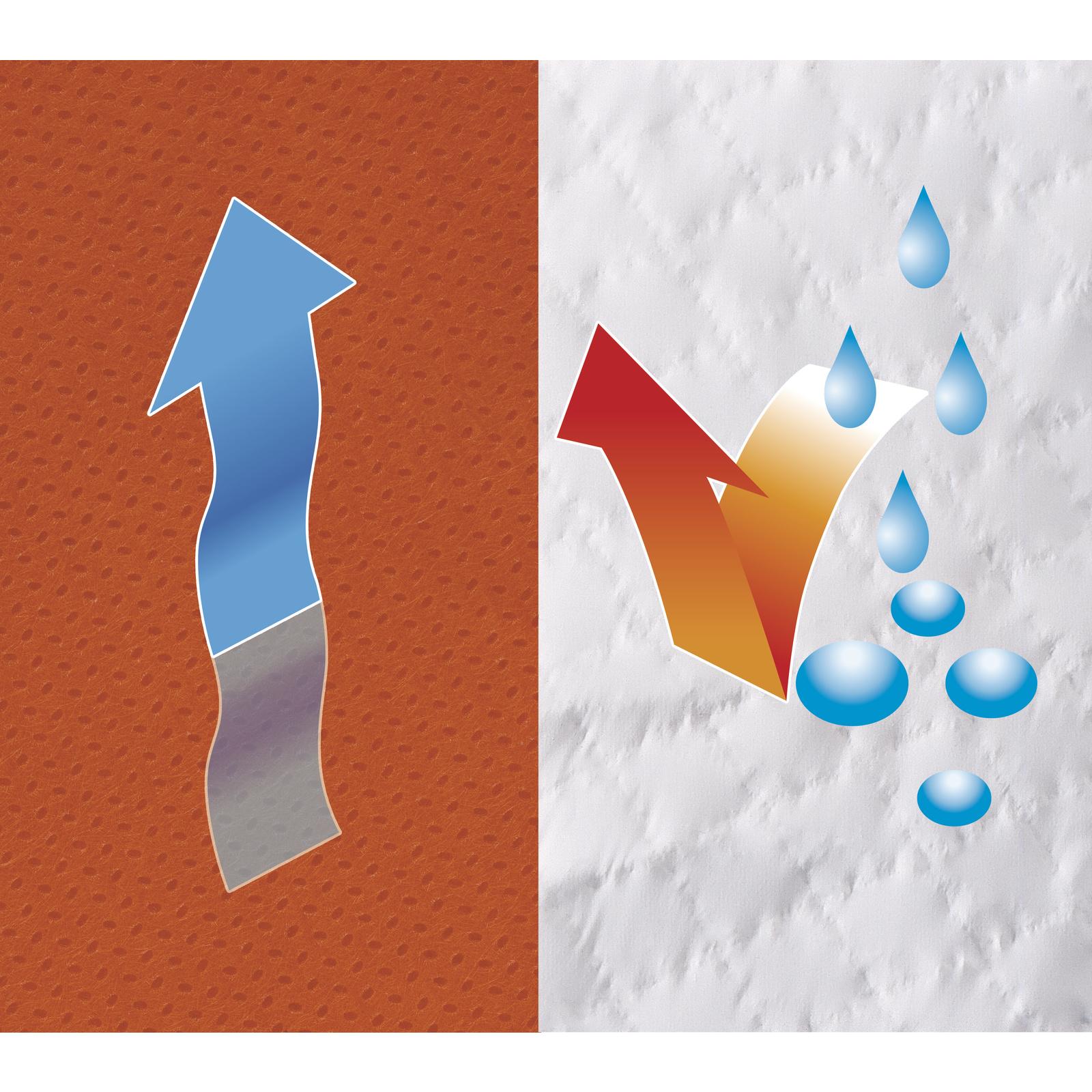The product complies with the European Directive 89/686, notably regarding ergonomics, innocuousness, comfort and with standards :
NON-WOVEN HOODED OVERALL – SINGLE-USE
DT125
Non-woven overall with three-sided elasticated hood. Made in 2 materials: laminated microporous and SMS. Fastening with zip under flap. Elasticated round head, waist, cuffs and ankles. Individual pack.
Front: Microporous laminate 60 g/m².
Back: SMS 52 g/m².
22/02/16
| Reference |
pcb |
Colour |
Size |
| DT125TM |
50 |
White-orange |
M |
| DT125GT |
50 |
White-orange |
L |
| DT125XG |
50 |
White-orange |
XL |
| DT125XX |
50 |
White-orange |
XXL |
| DT1253X |
50 |
White-orange |
3XL |
EN ISO 13688:2013 General requirements Reference standard, not for use alone, but only in association with another standard containing the protection performance requirements.
This standard specifies general performance requirements for ergonomics, innocuousness, size designation, durability, ageing, compatibility and marking of protective clothing and the information to be supplied by the manufacturer with the protective clothing.
EN ISO 13982-1:2004+A1:2010 Protective clothing for use against solid particulates - Type 5 clothing - 5 Protection against dust (asbestos) Type 5
- Protection against dust (asbestos) + biological protection Type 5B
Performance requirements for protective clothing against chemical products offering full body protection against air-borne solid particulates (type 5 clothing).
This standard sets out the minimum requirements for chemical protection clothing resisting penetration of solid particulates suspended in air (type 5).
This clothing offers full body protection, including the torso, arms and legs, such as one or two-piece coveralls, with or without hood or face-shield, with or without foot protection.
EN13034:2005+A1:2009 Performance requirements for chemical protective clothing offering limited protective performance against liquid chemicals (Type 6 equipment) - 6 Limited protection against liquid chemicals Type 6
- Limited protection against liquid chemicals + biological protection Type6B
- Limited protection against liquid chemicals + biological protection type (PB) 6 - partial body protection
EN1073-2:2002 Requirements and test methods for non-ventilated protective clothing against particulate radioactive contamination - 1 Radioactivité - Facteur de protection 5 - Classe 1
- Radioactivité - Facteur de protection 50 - Classe 2
This standard specifies the requirements and test methods for non ventilated protective clothing against radioactive contamination in the form of particles. Clothing of this type is designed only to protect the body, the arms and the legs of the wearer, but it may be used with accessories that protect other parts of the wearer’s body (for example, boots, gloves, respiratory protective device – APR).
The garments are classified according to their nominal protection factor (ratio between the concentration of test particles in the ambient atmosphere and the concentration of test particles inside the garment), determined in relation to the total inward leakage (ratio between the concentrations of test particles insider the garment and inside the test chamber).
The classes are as follows:
– CLASS 1: Nominal protection factor 5
– CLASS 2: Nominal protection factor 50
– CLASS 3: Nominal protection factor 500
EN1149-5:2008 Electrostatic properties - Part 5: Material performance and design requirements - =<2,5 Surface resistivity inferior or equal to 2.5x10⁹ Ohms on one surface at least following EN1149-1
- t50 <4s or S> 0.2 by method 2 ( charging by induction) of EN1149-3
This European Standard specifies requirements for materials and the design of protective electrostatic dissipation clothing used in conjunction with a grounded system in order to prevent incendiary discharges.
WARNING: These requirements may be insufficient in oxygen enriched flammable environments. This standard is not applicable for protection against mains voltages. The control of undesirable static electricity on the person is often necessary.
The electrostatic potential may, indeed, have serious consequences on the charged individual, because it can be high enough to cause dangerous sparks.
After a risk assessment, the wearing of protective electrical dissipation clothing may be necessary. The use of clothing certified according to EN1149-5 is then adapted.
The ATEX Directive 1999/92/EC, in its Annex II-A-2.3, requests that workers be equipped with work clothes made of materials that do not produce electrostatic discharges that can ignite explosive environments.
The electrostatic potential can also affect equipment sensitive to electric discharge. And antistatic clothing are often used on electronic manufacturing sites, assembling semiconductors for example. Finally, they are used on sites with controlled atmospheres such as automotive paint workshops, to avoid the emission of particles that may be deposited on the body paint.
The antistatic charge dissipation can be provided by a process limiting the build up of charge, or by adding carbon or metal wires. People wearing protective electrostatic charge dissipation clothing must always be grounded with a resistance of less than 10⁸Ω, for example, by wearing appropriate footwear such as the safety shoes stated in EN ISO 20345, or by other suitable means.





